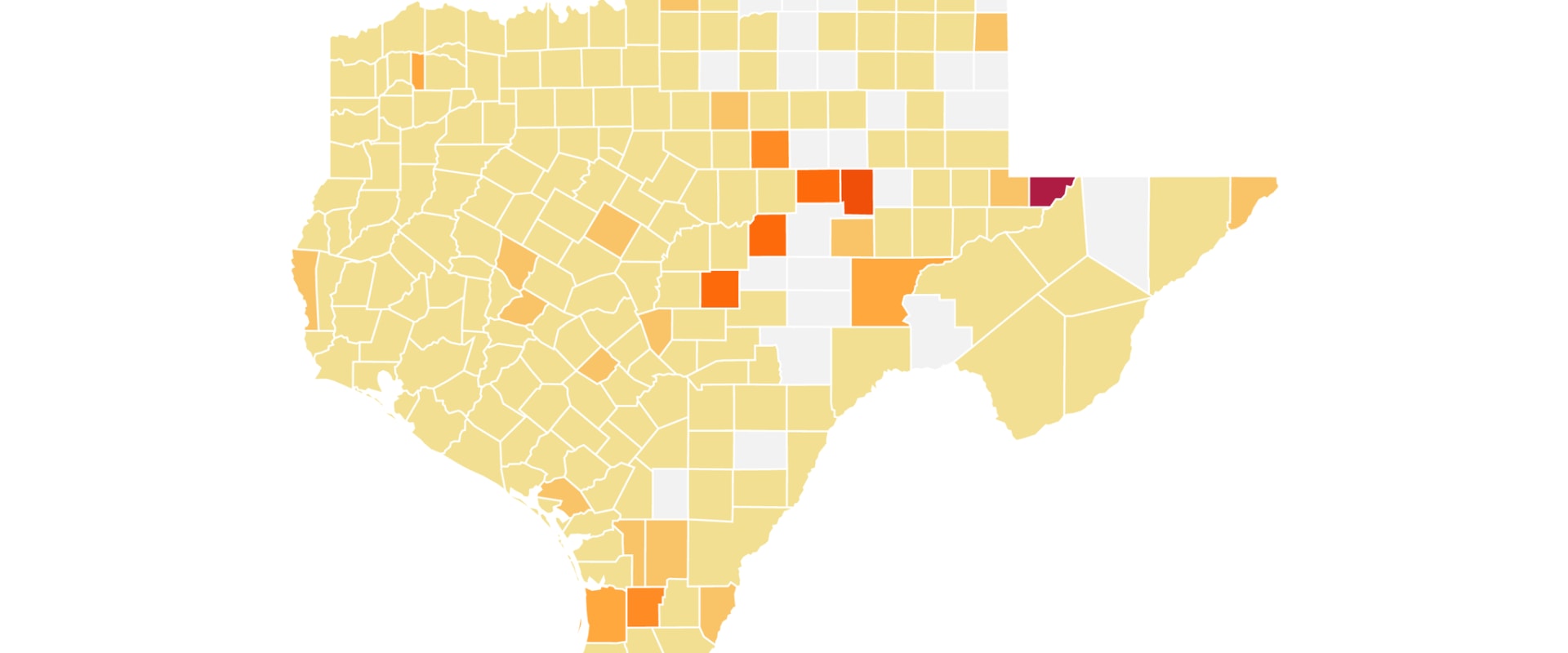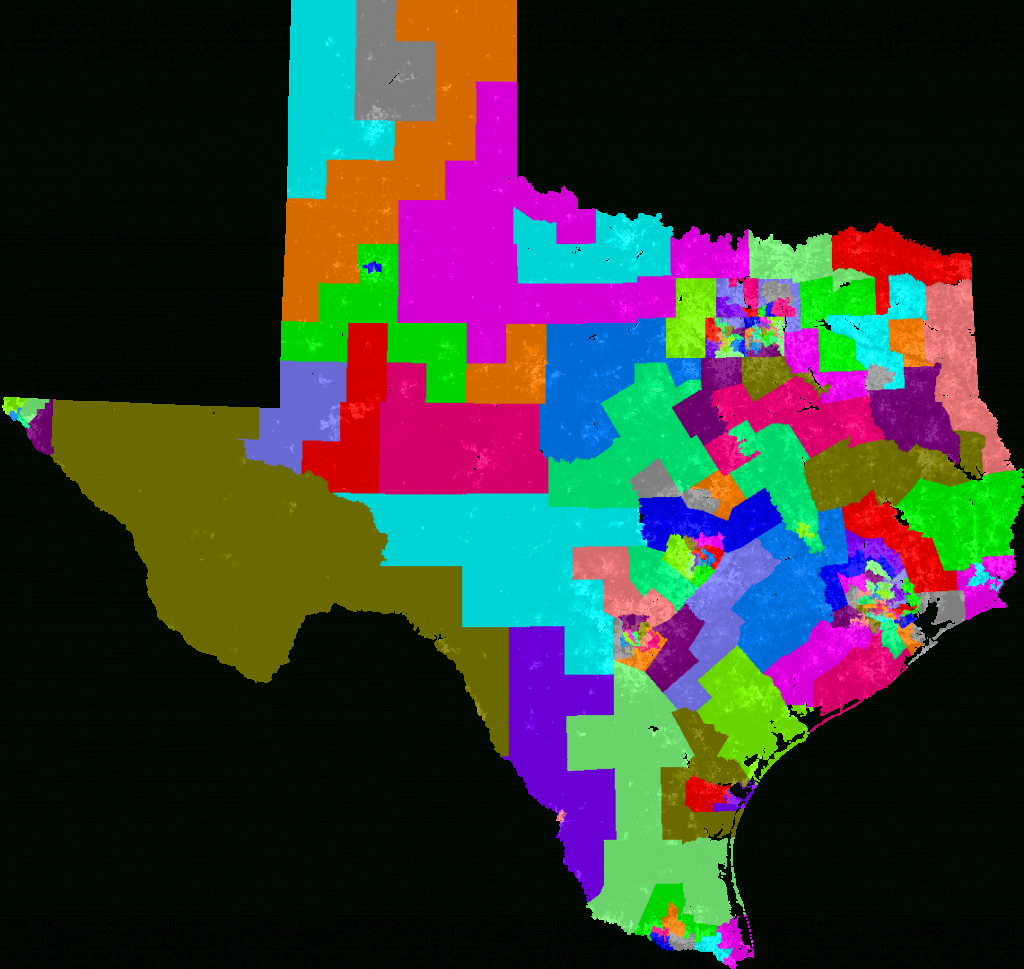How Many Representatives Does Texas Have? Unpacking The Lone Star State's Voice In Congress
Ever wondered how many voices speak for Texas in the vast halls of the U.S. Congress? It's a question many people ask, and for good reason, too. The number of representatives a state has directly impacts its influence on national policy, affecting everything from funding for local projects to major legislative decisions that shape our lives. Understanding this number helps us grasp the power and presence Texas holds on the federal stage, and frankly, it's a pretty important piece of information for any engaged citizen.
Texas, with its sprawling landscapes and rapidly growing communities, holds a significant position in the nation's political structure. This isn't just about raw numbers, though; it's about how those numbers come to be, reflecting the dynamic changes within the state itself. So, if you've been curious about the precise count of its congressional delegation, you're certainly in the right spot to find out.
We'll take a closer look at how these representatives are determined, what their roles involve, and where Texas stands compared to other states across the country. It's a fascinating look at how population shifts directly translate into political representation, and as a matter of fact, it truly shows the democratic process at work.
- When Was Danny Devitos Last Movie
- Who Is Divorced From Love Is Blind
- What Happened To Ambroses Boyfriend
- What Does Stella From Twisted Lies Look Like
- Are Mason And Meg Still Together
Table of Contents
- The Current Count: Texas in the House of Representatives
- How Representation Is Determined: The Apportionment Process
- A Look Back: Texas's Growing Voice in Congress
- What Does a Texas Representative Do?
- Texas's Standing on the National Stage
- Understanding Your Local Connection: Congressional Districts
- The Ongoing Process of Redistricting
- Frequently Asked Questions About Texas Representatives
- Bringing It All Together: Texas's Congressional Impact
The Current Count: Texas in the House of Representatives
As of 2024, Texas has a total of 38 seats in the U.S. House of Representatives. This figure reflects the most recent data available, placing Texas in a very prominent position nationally. It's quite a significant number, making the Lone Star State a major player when it comes to legislative matters in Washington, D.C.
This count isn't static, though. The number of representatives a state has can change after each decennial census, which counts the population every ten years. Texas, as a matter of fact, gained seats following the latest U.S. Census, a clear sign of its remarkable population growth over the past decade. It was, arguably, one of only six states to gain seats, and the only state that managed to get more than one new seat.
This means that Texas holds a substantial amount of legislative power, giving its citizens a strong collective voice in federal lawmaking. The number of people living in the state directly translates into how many individuals represent them in the nation's capital, which is a key part of our representative democracy.
- Do Jules And Josh Get Married In Twisted Lies
- Is Maria Bartiromo Married And Have Children
- Is Yung Gravy The Tallest Rapper
- What Kind Of Lawyer Is Joe Jamail
- Jules Ambrose
How Representation Is Determined: The Apportionment Process
The method used to figure out how many representatives each state gets is called "the method of equal proportion." Congress actually adopted this approach permanently back in 1941. This system ensures that representation is fair, or at least as fair as possible, across all states, regardless of their size or population.
Essentially, this method means that a state's population is the primary factor in determining its number of representatives. The more people a state has, the more representatives it will generally be allotted. The U.S. House of Representatives has a fixed maximum of 435 members, a limit set by law. So, in some respects, these 435 seats are divided up among the 50 states based on their population counts from the latest census.
For example, California, with its very large population of over 39 million people, currently has the highest number of representatives, with 53. Texas, with its 38 representatives, comes in as the second highest. This clearly shows how population density and growth directly influence a state's congressional strength. It's a rather straightforward system, yet it has profound implications for political influence.
A Look Back: Texas's Growing Voice in Congress
Texas has a rich history of congressional representation, dating back to its admission as the 28th state to the United States of America on December 29, 1845. Since then, many individuals have served in the congressional delegations from the state, representing Texans in both the U.S. House of Representatives and the U.S. Senate. This journey began after Texas, as a territory, was formally annexed as a state.
Over the decades, as Texas grew in population and economic significance, its number of representatives in the House has steadily increased. The jump to 38 seats, a result of the 2020 census, marks a significant milestone in this ongoing growth. It highlights the state's continued expansion and its rising importance on the national political landscape. This growth, you know, is a reflection of the state's vibrant communities and expanding opportunities.
It's interesting to note that as of July 2025, a total of 294 individuals will have represented Texas in the U.S. House of Representatives. This long list of public servants really tells a story of continuous representation and dedication to the people of Texas, showing just how long and varied the state's engagement with federal government has been.
What Does a Texas Representative Do?
A Texas congressman or congresswoman, also known as a U.S. Representative, serves as the voice for a specific geographic area within the state, called a congressional district. These individuals are elected by the people living in their district to serve a two-year term. Their primary job is to represent the interests of their constituents in Washington, D.C., by voting on legislation, advocating for state needs, and helping citizens with federal issues.
They spend a lot of time working on committees, debating bills, and meeting with various groups to gather input. It's a demanding role, requiring a deep connection to the local communities they serve while also understanding the broader national picture. Essentially, they are the direct link between the people of their district and the federal government, making sure local concerns are heard at the highest levels.
Beyond the U.S. House, it's worth remembering that Texas also has two members in the U.S. Senate. While the House members are based on population and represent specific districts, senators represent the entire state and serve six-year terms. So, Texas's federal delegation includes both these House members and its two senators, working together to advance the state's agenda.
Texas's Standing on the National Stage
With 38 representatives, Texas holds the second-highest number of congressional seats in the U.S., trailing only California. This substantial representation gives Texas considerable influence in the legislative process. When bills are debated and votes are cast, the sheer number of Texas representatives means their collective vote carries significant weight, which is a pretty big deal.
This high number of representatives is a direct consequence of Texas's large and continuously growing population. As more people move to the state, its political clout at the federal level naturally increases. It means more voices from Texas are involved in shaping national laws, allocating federal funds, and setting policy priorities that affect the entire country.
The state's growing representation also means it plays a critical role in national elections and political discourse. The issues important to Texans often become important national issues, given the number of people and the diversity of interests represented by its large delegation. It’s a clear example of how demographic shifts can lead to political power shifts, and you know, it's something that really highlights the state's dynamic nature.
Understanding Your Local Connection: Congressional Districts
Every one of Texas's 38 U.S. Representatives serves a specific congressional district. These districts are geographic areas drawn within the state, each designed to contain roughly the same number of people. So, while Texas has 38 representatives, each one is responsible for a particular slice of the state, making their work very localized in some respects.
You can find out who represents you by locating your specific congressional district. This is important because your representative is your direct link to the federal government. They are the person you contact with concerns about federal laws, government services, or any issue that falls under the purview of the U.S. Congress. It's a way to ensure that even in a large state, individual voices can still be heard in Washington, D.C.
The map of Texas's congressional districts has changed over time, particularly after each census, to account for population shifts. The interactive map versions available since 2023 help citizens visualize these districts and understand which representative serves their area. It’s a very practical tool for civic engagement, allowing people to connect directly with their elected federal and state officials.
The Ongoing Process of Redistricting
The process of drawing and redrawing congressional districts is known as redistricting. This happens after each decennial census to ensure that each district has a roughly equal population. In Texas, this significant task falls to the state legislature, specifically committees like the Senate Special Committee on Redistricting and the House Select Committee on Congressional Redistricting.
These committees hold public testimony and gather input from various regions across the state, including South and Central Texas, North Texas, and East and West Texas. The goal is to create districts that are fair and representative of the state's population distribution, though the process can often be complex and, in some cases, quite contentious. It's a very important aspect of ensuring that the number of representatives accurately reflects the people they serve.
The outcome of redistricting directly impacts which communities are grouped together and, consequently, who represents them in Congress. It's a powerful tool that shapes political representation for the next decade, showing how state-level decisions have a profound impact on federal politics. You can learn more about the Texas House of Representatives and its role in this process on their official site, for instance, by exploring information on legislation, committees, and sessions.
Frequently Asked Questions About Texas Representatives
People often have a few common questions about Texas's representation in the U.S. Congress. Here are some of the most frequently asked ones:
How many congressmen does Texas have as of the most recent data?
As of the most recent data, Texas is represented by 38 congressmen in the U.S. House of Representatives. This number places Texas second only to California in terms of congressional representation. This figure, you know, is a direct result of the state's large and growing population, which is allotted a substantial number of seats during the apportionment process.
How is the number of representatives for a state determined?
The number of representatives a state has is determined by its population, as counted in the decennial U.S. Census. Congress uses a method called "equal proportion" to apportion the 435 fixed seats of the House of Representatives among the 50 states. This means that states with larger populations, like Texas, naturally receive more representatives. It's a system that, basically, aims for fair population-based representation.
When did Texas gain its current number of representatives?
Texas gained its current number of 38 congressional seats as a result of the latest U.S. Census, the 2020 census. It was one of only six states to gain seats during this apportionment cycle, and notably, it was the only state that received more than one additional seat. This change came into effect for the congressional sessions starting in 2023, reflecting the significant population shifts observed. It's a rather recent development, showing the state's continued growth.
Bringing It All Together: Texas's Congressional Impact
Texas's 38 representatives in the U.S. House give it a powerful voice in national affairs. This substantial delegation, second only to California, means that issues important to Texans are heard loud and clear in Washington, D.C. From legislation to federal funding, the collective strength of these representatives plays a crucial role in shaping the future of both the state and the nation. It's a testament to the state's dynamic growth and its increasing influence on the broader political landscape.
Understanding how many representatives Texas has, and why that number matters, helps us appreciate the intricate workings of our federal government. It highlights the importance of population counts, the role of redistricting, and the direct connection between citizens and their elected officials. To learn more about how your state's government works, you might also want to check out information on the Texas Senate and House of Representatives.
- What Made Danny Devito Famous
- Does Yung Gravy Have A Phd
- Is Fairbanks Disease A Form Of Dwarfism
- What Is Jules Deployment
- How Rich Is Danny Devito

Why does texas have so many counties?

Texas House Of Representatives Redistricting - Texas State

Texas House Of Representatives Redistricting - Texas State